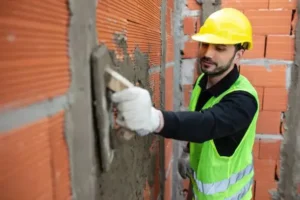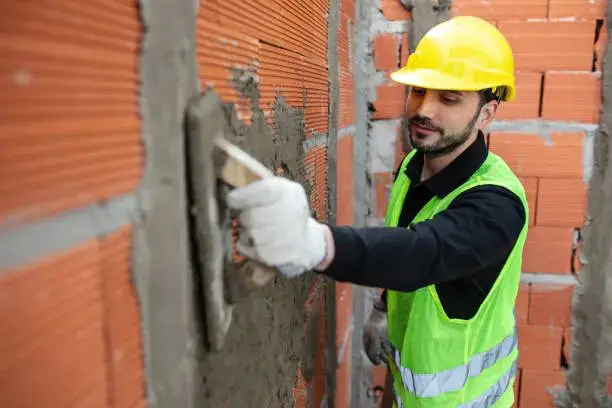Accurate masonry material estimation is critical to the success of any construction project. Whether you’re building a residential structure, commercial facility, or doing restoration work, precise calculations save time, money, and help avoid material shortages or costly overordering. This guide will walk you through everything you need to know about accurately estimating masonry material costs with the help of Masonry Estimating Services.

Why Accurate Masonry Estimation Matters
Construction is a numbers game. If you’re off by even a small percentage, it can throw off the entire project. Overestimating materials means wasted money, while underestimating leads to project delays. This is why many contractors rely on a Masonry Estimator or professional Masonry Estimating Services to get it right the first time.
Accurate Masonry Estimation ensures:
-
Optimal use of materials
-
Correct budgeting
-
Proper scheduling
-
Enhanced project management
Now, let’s explore how to estimate masonry materials accurately.
Step 1: Understand the Scope of the Masonry Work
Before jumping into calculations, understand what type of masonry work is involved. Common types include:
-
Brick masonry
-
Concrete block masonry
-
Stone masonry
Each material has different size, shape, weight, and cost. Knowing your material is the foundation of a good estimate.
Step 2: Gather Project Details and Blueprints
To make accurate material estimates, start with detailed blueprints or drawings. Identify:
-
Wall dimensions (length, height, thickness)
-
Openings (doors, windows)
-
Special features (arches, curves, columns)
An experienced Masonry Estimator will review these elements to determine the precise quantity of materials needed, including mortar, reinforcement, and waste factors.
Step 3: Calculate the Surface Area
Use this formula to calculate the surface area of the walls:
Wall Area = Height × Length
Subtract the area of windows, doors, and other openings to get the net wall area. This figure will help determine how many bricks, blocks, or stones you’ll need.
For example:
-
Wall size: 10 ft (height) × 20 ft (length) = 200 sq. ft.
-
Window: 3 ft × 4 ft = 12 sq. ft.
-
Net Wall Area = 200 – 12 = 188 sq. ft.
Step 4: Estimate Number of Units Required
Each masonry unit (brick/block) covers a certain area. Standard brick covers about 0.22 sq. ft.
Number of Bricks = Net Wall Area ÷ Area Covered by One Brick
Using the example above:
188 ÷ 0.22 = ~855 bricks
Add 5% to 10% for waste and breakage:
855 + 10% = ~940 bricks
This type of calculation is a key part of Masonry Estimating Services, which use advanced tools and software to automate and improve accuracy.
Step 5: Estimate Mortar Quantity
Mortar binds masonry units together. A general rule is:
-
For bricks: 1 cubic meter of mortar for every 1,000 bricks.
-
For blocks: 1 cubic meter per 1,250 blocks.
Use the correct mortar mix based on the type of masonry and environmental factors.
A skilled Masonry Estimator can calculate this more precisely, considering joint thickness, wall type, and mixing ratios.
Step 6: Add Reinforcement and Accessories
In many projects, masonry walls are reinforced with steel bars, mesh, or ties. Also, don’t forget accessories like:
-
Lintels
-
Flashing
-
Expansion joints
Estimate these items based on the specifications and architectural design. Masonry Estimation services often use detailed takeoff software to list out these components with prices.
Step 7: Calculate Costs
Once the quantities are finalized, the next step is to apply current material costs. This includes:
-
Cost per unit (brick, block, stone)
-
Mortar price (per cubic meter or bag)
-
Labor cost
-
Transportation or delivery charges
-
Miscellaneous materials
You can get this data from suppliers or allow a Masonry Estimating Services company to gather real-time pricing on your behalf.
Step 8: Consider Labor and Equipment
Material is only part of the equation. Labor is often 30-50% of the total masonry cost. Calculate labor based on:
-
Unit rate (e.g., cost per brick laid)
-
Project complexity
-
Crew size and daily output
You may also need scaffolding, mixers, or lifting equipment. These add to the total cost and should be part of a complete Masonry Estimation report.
Step 9: Apply Waste and Contingencies
Even the best plans can go wrong. Always include:
-
5-10% extra material for breakage or design changes
-
Contingency (5-15%) for unexpected costs
This buffer helps protect your budget and ensures the project stays on track.
Step 10: Use Professional Masonry Estimating Services
Doing all the above manually is time-consuming and error-prone. That’s why professional Masonry Estimating Services are in high demand. These services use digital takeoffs, estimating software, and industry expertise to:
-
Provide fast and accurate estimates
-
Eliminate human error
-
Offer competitive pricing
-
Save time for contractors and builders
Hiring a Masonry Estimator with experience can save thousands of dollars over the course of a project.
Conclusion
Accurately estimating masonry material costs is both an art and a science. From calculating wall areas to accounting for labor and waste, there are many variables to consider. Fortunately, professional Masonry Estimating Services can make this process smooth and error-free.
Whether you’re a builder, developer, or contractor, partnering with a skilled Masonry Estimator will help you deliver successful projects on time and within budget. Don’t leave your estimate to chance—use trusted Masonry Estimation methods and services for accurate, professional results.



